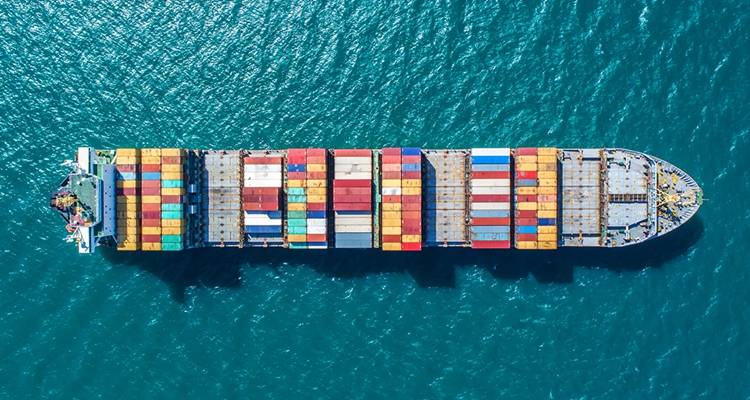The COVID-19 pandemic has sparked record costs for transporting goods from Asia by containership as consumers worldwide flock to products that support their new stay-at-home lifestyles.
Shipping volumes have surged for items such as furniture, appliances and toys.
“In December 2020, we saw orders way beyond our capacity to transport,” said an official at a major shipping company.
Rates for sending goods from Asia to the U.S. and Europe typically decline from November as shipping for the year-end shopping season wanes. But demand is continuing this time, with many goods shipping even in January. Rates show no sign of coming down.

The spot rate for sending a 40-foot container from Shanghai to the U.S. surged 150% on the year to $4,019 this month at the Shanghai Shipping Exchange, putting it in record territory. The cost of shipping a 20-foot container to Europe quadrupled to $4,452, also near an all-time high.
The number of containers shipped from Asia to the U.S. climbed 23.6% in November to a record for that month, American research firm Descartes Datamyne reports.
Furniture was the leading product category, with shipments climbing 23.9%. Toys and sporting goods, a category that includes games, jumped 21.6%. In contrast, shipments of steel products rose 1% while automobile-related goods increased 5.9%.
Strong housing sales fueled the robust demand for furniture. U.S. housing starts rose 1.2% in November from October’s revised figure to an annualized 1.55 million units, seasonally adjusted figures from the Commerce Department show. The total grew for the third straight month and reached a high not seen in nine months.
“As long as housing starts don’t go down, demand for shipping to the U.S. should stay solid,” said a representative at a container shipping company.
Shipments to Europe also are growing despite the pandemic. Container volume from Asia to Europe rose 7% in October, a high for that month, the Japan Maritime Center said.
Though the push for furniture is not as strong as in the U.S., “there is growing demand to transport such products as personal computers to set up a work-from-home environment,” an official at a foreign shipping company said.
The shift to e-commerce in Japan has not only contributed to the higher shipping volumes, but also strained the capacity of freight trucks and logistics centers.
Japan also is producing heavy demand for items sought by consumers staying home, such as furniture and appliances. Container shipments from China to Japan surged 20.5% in October for furniture and bedding, the only category among the top 10 to log a double-digit gain.
Housing starts in Japan dipped 9.9% in September, down for the 15th straight month, but the rapid switch to telecommuting and stimulus payments of 100,000 yen ($961) to all residents earlier in the pandemic boosted purchases of durable goods.
Changes in how consumers live and shop are reverberating through transportation networks. A shift to e-commerce has strained freight trucks and logistics centers in Japan, and these disruptions, scaled up to a national level, have bogged down the global flow of goods by sea.
The shifting trends in maritime transport, which accounts for more than half of international shipping, have begun affecting corporate supply chains.
Honda Motor in December halted a plant in the U.K. for several days as delays at ports led to parts shortages. A major precision equipment manufacturer said it announced internally that the company would accelerate its production schedule and parts procurement in anticipation of shipping slowdowns.
“We have inventory shortages in the U.S. because of stalled shipping,” said a representative from a construction equipment maker. “There’s strong demand there, so we would’ve been able to sell if only we had the stock for it.”
Exacerbating the situation is a shortage of shipping containers that has persisted since demand picked up in early 2020. Many containers sent from Asia to Europe and the U.S. amid a surge in shipments were stranded there, which in some cases has left companies that want to transport products from Asia unable to do so.
Shipping rates endured a lengthy slump before the pandemic due to unfavorable trends including a weak global economy, an oversupply of transport capacity and trade friction between the U.S. and China.
Volumes declined in the early days of the coronavirus outbreak as economic activity shut down, particularly in China, sinking rates further. But changing consumer habits and a strong appetite for shopping have sparked a recovery.
Many industry watchers expect the brisk demand and container shortage to persist in the short term. Surging rates mean increased shipping costs for businesses, which could be passed on to customers through higher prices.
Source:Nikkei Asian

